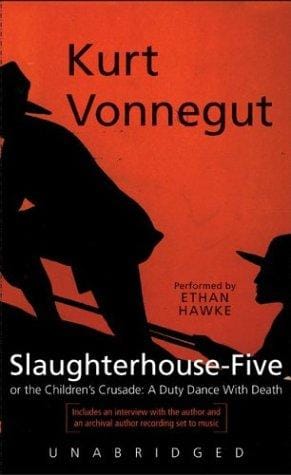A Deep Dive into "A Study in Scarlet": Sherlock Holmes’s First Case
Explore Arthur Conan Doyle's groundbreaking detective novel "A Study in Scarlet"—its plot, themes, and legacy in about 800 words.

Introduction
Arthur Conan Doyle’s "A Study in Scarlet" is more than just the first Sherlock Holmes story; it is the spark that ignited one of literature’s most enduring franchises. Published in 1887, the novella introduced readers to the razor-sharp intellect of Holmes and the steady, observant narration of Dr. John Watson. Over 135 years later, the book remains essential reading for mystery fans and scholars alike. This article offers an 800-word exploration of the novel’s origins, plot, themes, characters, and continuing legacy, providing both newcomers and seasoned Holmesians with fresh insights into this Victorian classic.
The Road to Publication
Conan Doyle was only twenty-seven when he wrote "A Study in Scarlet." Working as a struggling physician in Southsea, England, he composed fiction during quiet hours at his practice. After several rejections, the manuscript finally found a home in Beeton’s Christmas Annual, a popular magazine that specialized in holiday fiction. The modest £25 payment Doyle received disguised the monumental significance of the deal; the novella’s appearance in the 1887 annual would alter detective fiction forever. Despite lukewarm initial reviews, the story’s innovative methodical detective and detailed forensic reasoning set it apart from contemporaries such as Edgar Allan Poe’s Dupin or Émile Gaboriau’s Lecoq.
Plot Overview: A Tale in Two Parts
"A Study in Scarlet" is uniquely structured, splitting the narrative into two distinct but intertwined halves. The first part occurs in Victorian London, where Dr. Watson, newly returned from military service in Afghanistan, seeks affordable lodging. An acquaintance introduces him to the eccentric consulting detective Sherlock Holmes, and the two take rooms at 221B Baker Street. Soon they are summoned to a deserted house in Brixton, where the body of Enoch Drebber is found without a mark of violence. The word RACHE—German for "revenge"—is scrawled in blood on the wall, adding an ominous clue.
Holmes’s scientific approach—chemical tests, footprint analysis, and meticulous reasoning—quickly identifies Jefferson Hope as the murderer. The second part, set decades earlier in the American West, provides the motive: Hope’s fiancée, Lucy Ferrier, was forced into a loveless marriage by ruthless Mormon elders, leading to the deaths of Lucy and her father. Hope pursues the culprits, Drebber and Stangerson, across continents, finally enacting revenge in London. The story concludes in a British courtroom with Holmes’s triumph recognized, though police detectives Lestrade and Gregson attempt to share credit.
Major Themes and Literary Significance
The Science of Deduction
Perhaps the novel’s most influential theme is the power of rational deduction. Holmes’s famous maxim—"From a drop of water… a logician could infer the possibility of an Atlantic or a Niagara"—illustrates Conan Doyle’s Victorian faith in scientific progress. By showcasing cutting-edge forensic methods such as chemical analysis of hemoglobin and cigar-ash taxonomy, "A Study in Scarlet" legitimized detective work as an intellectual, almost academic pursuit.
Justice Versus Law
The narrative also raises questions about vigilante justice. Jefferson Hope’s revenge murders elicit sympathy because the legal system of the time could not punish Drebber and Stangerson. Conan Doyle invites readers to weigh moral justice against institutional law, a debate that continues to resonate in modern crime fiction.
Outsiders and Belonging
Holmes and Watson are outsiders of different kinds—Holmes by his remarkable intellect and antisocial tendencies, Watson by his war injuries and search for purpose. Their partnership demonstrates how complementary strengths can create a formidable team, a trope that has become standard in detective duos since.
The Birth of Iconic Characters
Sherlock Holmes
With his deerstalker cap, curved pipe, and icy detachment, Sherlock Holmes revolutionized the fictional detective. He was partially inspired by Dr. Joseph Bell, one of Conan Doyle’s medical professors, who impressed Doyle with his uncanny diagnostic abilities. Holmes’s mixture of observation, chemistry, violin playing, and bohemian habits laid the blueprint for the modern eccentric genius archetype.
Dr. John Watson
Watson serves as the everyman narrator, grounding Holmes’s brilliance in relatable human concerns. His medical background equips him to appreciate Holmes’s scientific rigor, while his veteran’s stoicism provides emotional balance. Through Watson’s eyes, readers gain entry into Holmes’s world without becoming overwhelmed by jargon or arrogance.
Legacy and Cultural Impact
Although "A Study in Scarlet" was only modestly successful on release, subsequent Holmes stories—especially "The Adventures of Sherlock Holmes"—catapulted the detective to international fame. The novella’s structure inspired countless adaptations across radio, film, television, and graphic novels. Its influence can be seen in modern procedurals like "CSI" and "Sherlock," where observational science cracks seemingly unsolvable cases.
Notably, the novel introduced 221B Baker Street, now a real-world pilgrimage site for fans. It also popularized the phrase "the game is afoot," cementing Holmes’s lines in everyday English. Literary scholars credit Doyle with shifting crime fiction from melodramatic whodunits toward analytical narratives focused on evidence and methodology.
Reading "A Study in Scarlet" Today: Tips and Reflections
Modern readers may notice dated attitudes, particularly the portrayal of Mormon characters, which reflects nineteenth-century sensationalism rather than accurate theology. Approaching these sections with historical context enhances appreciation of Doyle’s storytelling while acknowledging its biases.
If you are new to Sherlock Holmes, begin by savoring Holmes and Watson’s first meeting; it epitomizes Doyle’s flair for character chemistry. Pay attention to recurring motifs—violin music, newspaper clippings, tobacco ash—as they foreshadow methods Holmes uses in later cases. Annotated editions can clarify Victorian slang and medical references, enriching comprehension.
Finally, don’t rush the American flashback. Though seemingly disconnected, it supplies emotional depth and motivation, transforming the mystery from a cerebral puzzle into a tragic human drama.
Conclusion
"A Study in Scarlet" remains a cornerstone of detective literature, merging riveting mystery with pioneering forensic detail. Its introduction of Sherlock Holmes and Dr. Watson set a benchmark that crime writers still strive to reach. Whether you are exploring the canon for the first time or revisiting familiar streets of foggy London, this novella offers a captivating journey into deduction, justice, and the enduring bond between two unlikely friends. The scarlet thread of revenge woven through its pages continues to fascinate, proving that well-crafted storytelling never fades with time.



